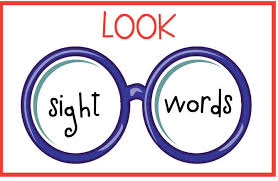
What are Sight Words?
Believe it or not, 50% of all reading texts are made up of the same 100 words! The most frequently used and repeated words in the English language are known as sight words. This list of words includes the, a, is, of, to, in, and, I, you, and that. Think about the number of times that you have seen these words in a piece of reading material. It’s probably too many times to count.
Sight words are critical to reading not only because they are used so frequently, but also because many of them cannot easily be sounded out or illustrated. Imagine what reading would be like if you attempted to sound out walk every time you encountered it in your reading. Then imagine that you do not know the word the. You cannot use the pictures accompanying a text to help you decipher this word because it cannot be illustrated. Using phonics or picture reading skills for words like these is useless and fruitless for readers, especially those who are in the early stages of developing their decoding skills.
Because they are used so often it is important that readers be able to recognize these words on sight (hence the term “sight words”). When a reader masters sight words she is able to understand at least half of the words in a particular text. By eliminating the need to decode these words, the reader is able to focus on those that are more difficult and less familiar. Beyond this, sight words offer important clues about the meaning of a sentence. For example, when a reader is able to identify and understand the word and in a sentence, he knows that there will be multiple figures, actions or descriptors in the sentence. Similarly, if the reader sees the word into in the sentence, she knows there is movement from one location or idea to another.
While any word that a reader is exposed to repetitively can become a sight word, E.W. Dolch wanted to identify key words that are used most frequently in all children’s texts. Through his examination of a wide variety of children’s books, Dolch was able to pinpoint the words that are most often used by authors of juvenile texts. He believed if children could learn and easily identify these words then they would be able to read 50 to 75% of any text.
Dolch’s list of words includes 220 words he calls “service words” as well as 95 frequently used nouns. The “service words” are high frequency pronouns, adjectives, adverbs, prepositions, conjunctions and verbs. Using this larger list, he created smaller lists of specific words he recommended that children learn at each grade level. Dolch organized these lists based on the regularity with which each word was used in the books he surveyed. He believed that the more frequently a word was used the earlier a child should be taught it. Therefore, the highest frequency words are on the pre-primer list which Dolch recommends children master before the end of first grade.
Source: http://www.k12reader.com/what-are-sight-words/
DOLCH Pre-Primer Word Lists and Flash Cards
DOLCH Primer Word Lists and Flash Cards
DOLCH 1st Grade Word Lists and Flash Cards
DOLCH 2nd Grade Word Lists and Flash Cards
DOLCH 3rd Grade Word Lists and Flash Cards